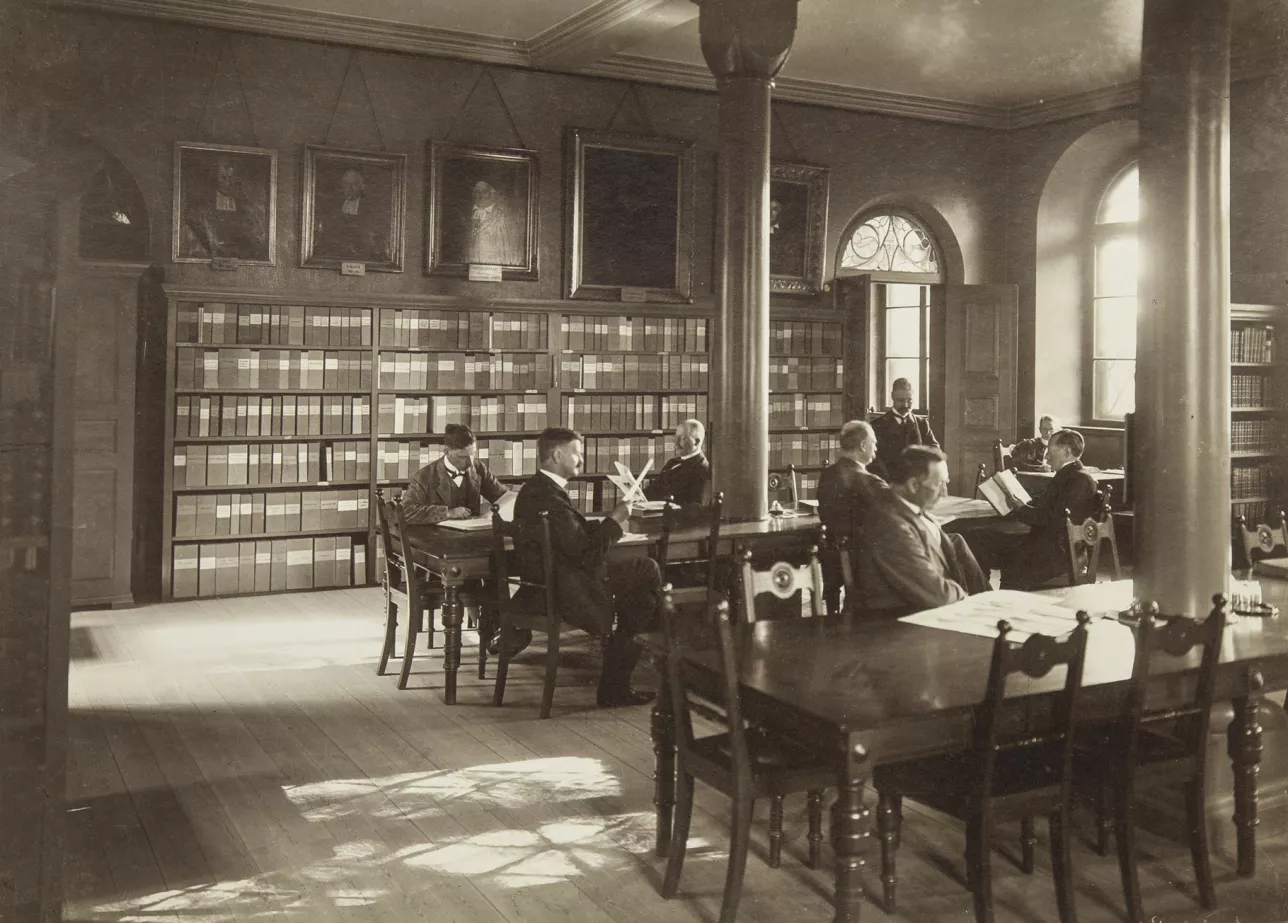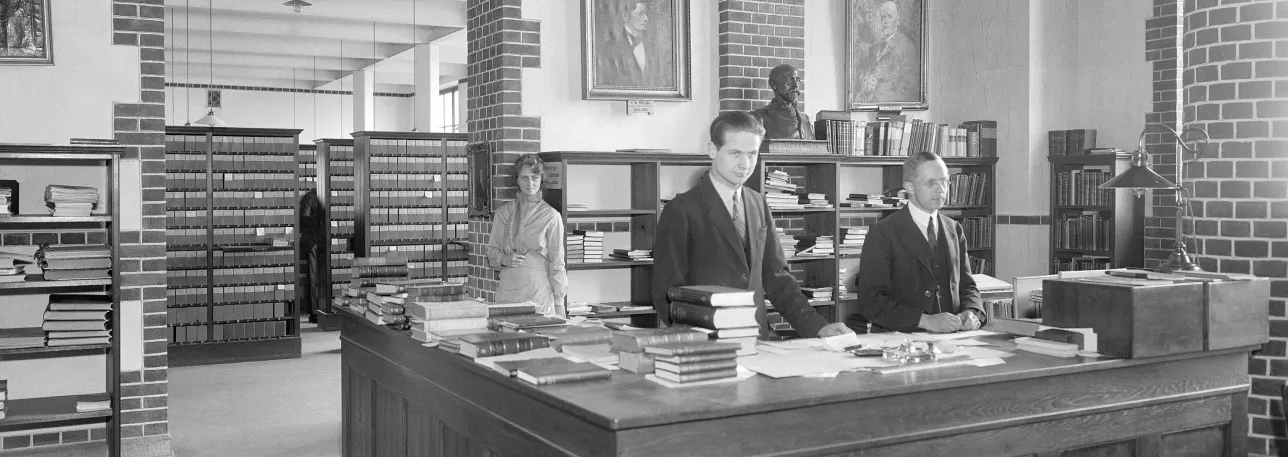History
Lund University Library was founded in 1666. Thirty years later, we became a legal depository library, preserving all Swedish publications for the future. In 1907 we moved into our building at Helgonabacken. Despite several extensions, there is a lack of space, and some of our collections are in off-site depositories.
Liberiet and Kungshuset
The University did not own many books from the start. In 1671 the University Library received its first major book and manuscript collection from the Cathedral Chapter. The book collection, containing 25 shelf meters, was shelved in Liberiet near the Cathedral. In 1690 the University Library moved to Kungshuset (the King’s House) in Lundagård, which also served as the University building at the time.
Storage conditions for books were not the best in Kungshuset. Grain, as well as pigs, were kept there, and the roof was leaking. At the end of the 17th century, the librarian Bonde Humerus divided the University books into five categories:
1. Wet or worm-eaten
2. Burned
3. Stained
4. Defective, and
5. Mouse-eaten or all gone!
The library becomes a legal depository library
In the beginning, the University Library’s collections grew mainly from donations of book and manuscript collections.
In 1698 king Karl XII introduced the system of legal deposit. It means that we receive one copy of all printed publications in Sweden and that our collections were and are growing fast.
Legal deposits are still an essential part of our work today, and donations continue to enrich our collections.

In 1907 the library moved to Helgonabacken
The lack of space was acute in Kungshuset at the end of the 19th century. After lengthy discussions, the University decided to build a library at Helgonabacken, even though head librarian Elof Tegnér thought it to be too remote a site – outside the town limits and lacking police protection.
Alfred Hellerström designed the new library. In February 1907, the move began from Kungshuset – with newspapers transported on sleighs in the snow up the hill – to Helgonabacken. In August and September, the books moved into Helgonabacken, and on 25 September, the new library opened to visitors.

It was not long before the building became too small at Helgonabacken. Despite extensions in 1936, 1957, and 1994, doubling the library space, our collections still do not fit in the building. Today a large part of our collections, which in total cover more than 130,000 shelf meters, are in off-site depositories in Lund and its neighbourhood.
Read more about the history of the University Library
You can read more about the University Library’s history and collections in:
- Från Lundagård till Helgonabacken (1957), Krister Gierow
- Här får intet arbete utföras: Universitetsbiblioteket 100 år på Helgonabacken (2007), editors Håkan Håkansson, Eva Nylander and Björn Dal
We also sell publications connected with the University Library and our collections. Contact us if you need more information!

